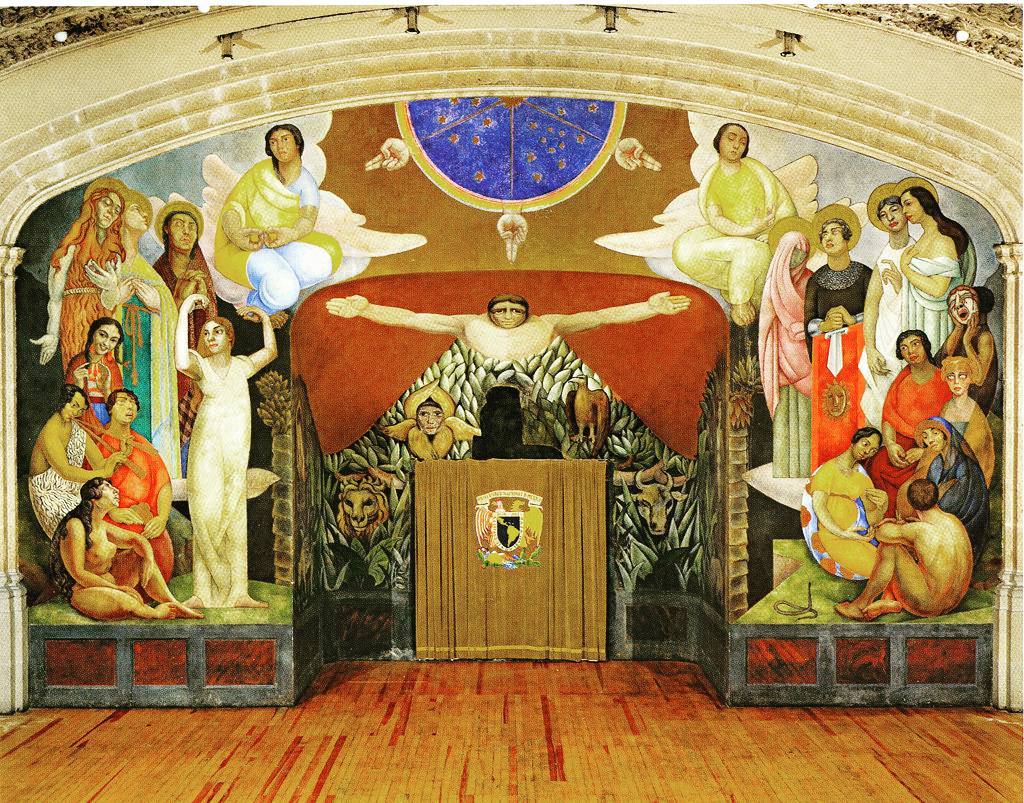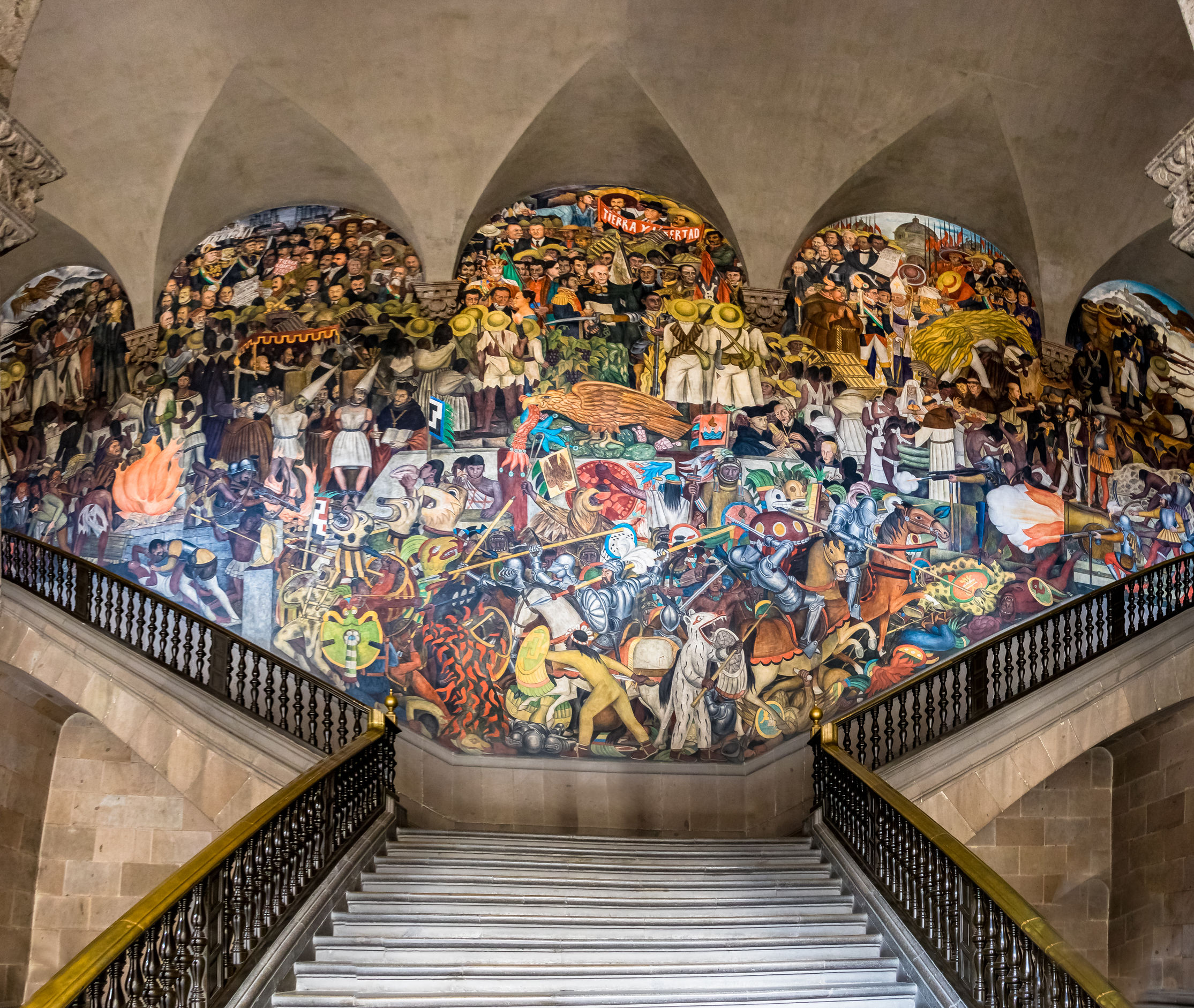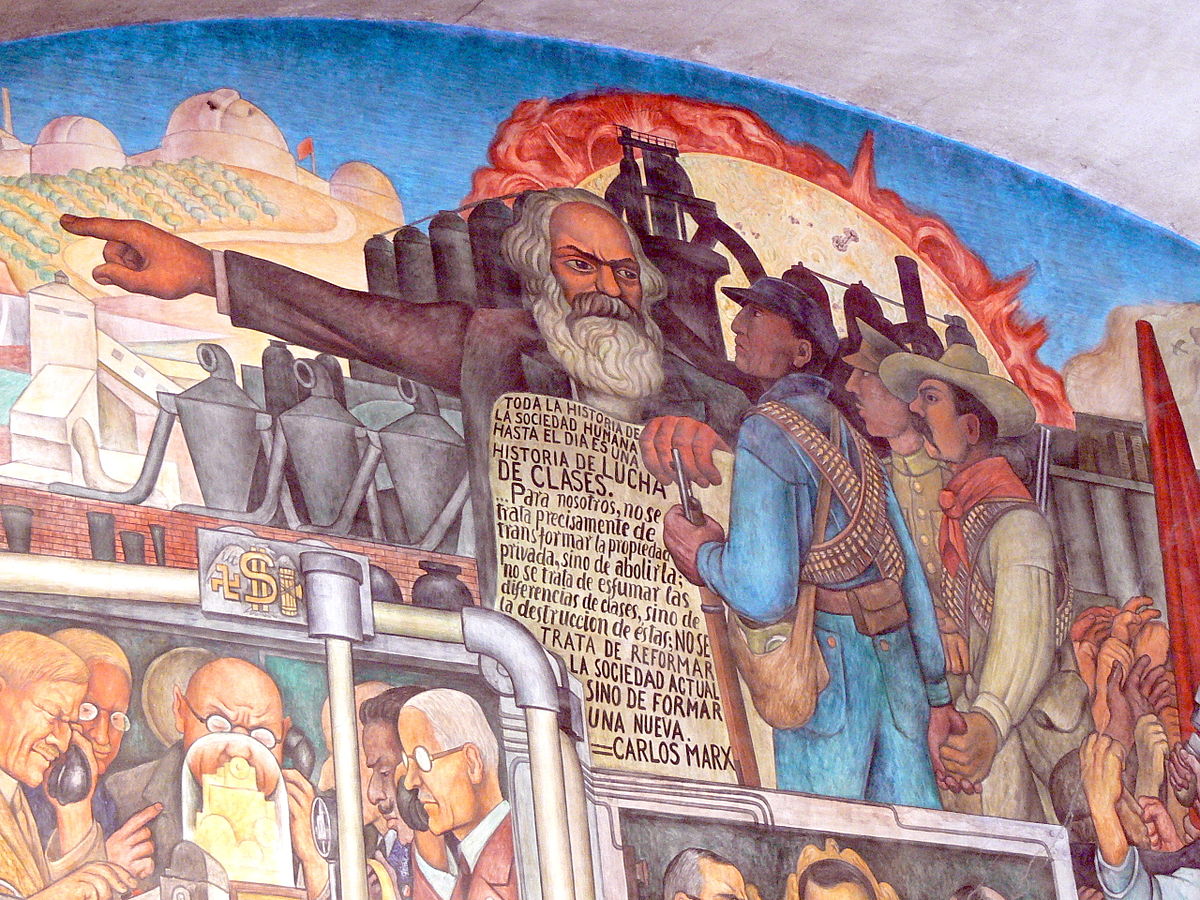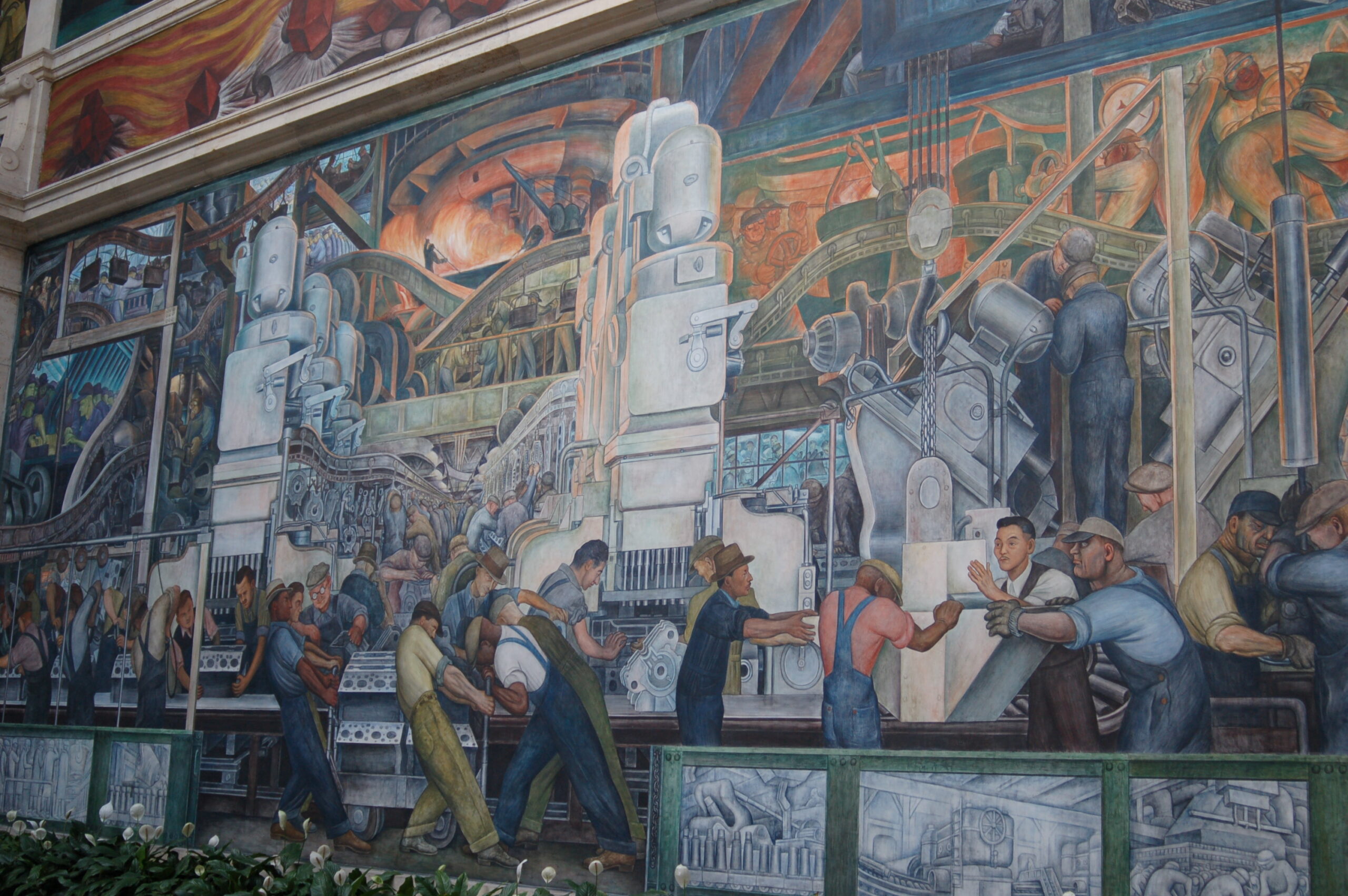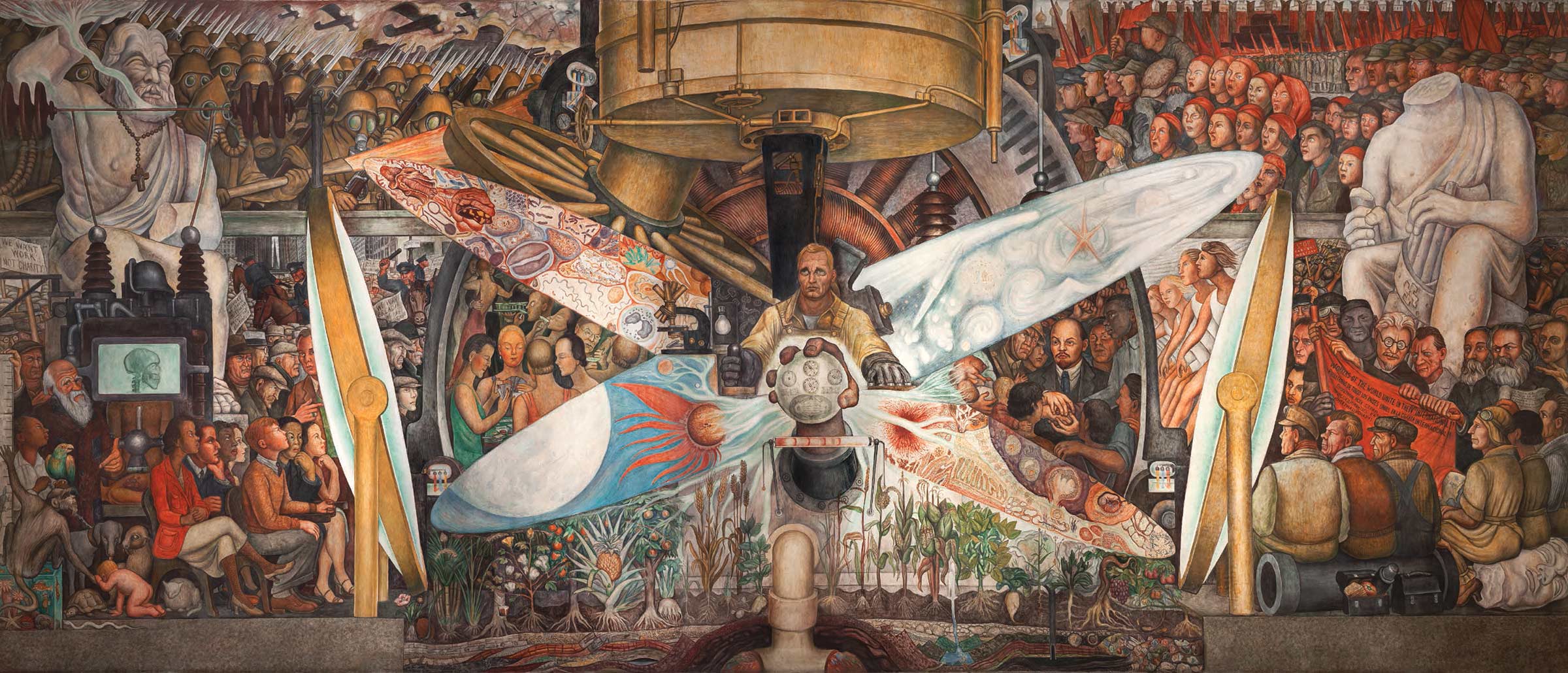In 1886, one of the most beloved and acclaimed Mexican painters in national history was born, especially remembered for the extraordinary career he developed in the artistic movement of muralism. If you want to know a little more about the Art Works by Diego Rivera, stay and learn with us with this informative article that we have made.

5 most recognized works by Diego Rivera
After many years of hard work, Diego Rivera became one of the most acclaimed painters in all of Mexico and one of the most ambitious of the XNUMXth century, always trying his best to exceed his own limits. Even to this day, his exceptional work as a muralist is still highly praised. Diego Rivera's works are impressive.
Despite the fact that there are numerous detractors of him regarding his development as a professional and, above all, as a human being, his works have had great popularity due to his high social commitment. And it is that, in effect, the murals of him in his fresco placed him on an artistic pedestal that very few Mexicans have reached outside of his territory.
Rivera played a very important role in the rebirth of this kind of painting, whose questioning is inconceivable. The walls and ceilings that he made in the public buildings of his country quickly became his closest allies in terms of defending the working class. They are considered some of Diego Rivera's most audacious works.
He is undoubtedly considered a faithful follower of communism, since he played such a role throughout his life, with social and nationalist themes as the main protagonists of his paintings. In each of them he made use of the abundance of color, while he often alluded to Mexico's pre-Columbian past.
In this way, the muralist recreated the most varied costumbrista scenes of that time. Although the author's catalog of productions is quite extensive, below, we have selected the most important ones to develop them one by one:
The Creation (1922)
In 1922, Diego Rivera painted his first mural inside the Simón Bolívar Amphitheater, in the Antiguo Colegio de San Ildefonso located in the Historic Center of Mexico City. This mural was commissioned by the then Secretary of Public Education of Mexico, José Vasconcelos.
This is inspired by a set of aesthetic elements, acquired from the experiences lived on his trip to the city of southeastern Mexico, Santo Domingo Tehuantepec. The center of such a composition is the starting point, from which a kind of original cell emerges, a man with open arms in the shape of a cross.
The blue semicircle located at the top of the mural plays the role of a symbol of the energy or principle of the creator, at the same time that it radiates its light to all sides of the painting. At both ends we find two individual scenes, but they complement each other.
The one on the left is a clear allegory to music, which in this case is represented by a young woman dressed in sheepskin and playing a flute. In the company of this figure, you can see other allegories related to singing (red dress), comedy (who wears two pigtails), and, finally, dance, which she stands with her arms raised.
In addition to this, the theological virtues are added to the whole: charity, faith and hope. For its part, in the panel on the right we could identify the allegories of the fable (who wears a dress with blue and gold tones) and tradition (who is dressed in crimson).
Similarly, we can see erotic poetry and tragedy, the latter using a mask to cover his face. In addition, in the upper part, standing, are the living personifications of the four cardinal virtues: prudence, justice, strength and temperance. At the feet of each of the groups, the woman (left) and the man (right) remain naked.
Epic of the Mexican people (1929-1935)
"The Epic of the Mexican People", sometimes called simply as "History of Mexico", is a fresco made by Rivera on the walls of the main staircase of the National Palace of Mexico, between the years 1929 and 1935. It was also created under a commissioned by the secretary of public education, José Vasconcelos, within the framework of the Mexican muralist Renaissance.
One of Diego Rivera's works is this extensive mural of the Ministry of Public Education, with an approximate area of 276 m², it is responsible for boldly demonstrating the mature style of the painter. “The Epic of the Mexican People” is made up of three sections in which its author took on the ambitious task of representing the contemporary history of her nation up to 1935 and the near future.
In the part on the right, located north of the National Palace, pre-Hispanic Mexico is represented through the myth of Cē Ācatl Tōpīltzin in Tula. The central part, the one on the west side, is the largest of all and it represents Mexico from the Spanish conquest until the 30s.
In the third section, the southern one, a Marxist vision of the nation during the XNUMXth century is embodied. In itself, the topic that unites each of these various events is the struggles of social classes, clearly transmitted by the central figure of the impressive fresco.
The figure we are talking about is Karl Marx himself, who holds a poster with a small excerpt from the Communist Manifesto in which the following is expressed:
“The entire history of human society to this day is a history of class struggle. For us it is not precisely a question of transforming private property, but of abolishing it; It is not about blurring class differences, but about destroying them; It is not about reforming the current society, but about forming a new one”.
Although the mural represents the centuries and centuries of struggle and repression by those corrupt ruling classes, it has a rather optimistic ending. It points to a utopia where farmers and factory workers work together, where everyone lives in harmony with nature and ultimately prospers.
Detroit Industry Murals (1932-1933)
By the 30s, word had spread about Rivera's exceptional frescoes in his native Mexico, which is why the artist managed to get countless patrons around the United States. One of them was Edsel Bryant Ford, the American businessman and philanthropist, son of Henry Ford.
This automobile magnate financed the muralist one of his most audacious works up to that time, “Detroit Industry Murals”. Over nine months, the artist settled in the city of Detroit, and managed to cover the entire central lobby of the Detroit Institute of Arts, with a series of no more and no less than 27 paintings on four different walls.
They tell the story of the city through multiple layers, all through the representations of its workers, as well as the advances made in various scientific fields and landscapes. That's because while Detroit was once a thriving industrial center in the early XNUMXth century, it too saw many layoffs during the Great Depression.
When Diego arrived in the city in 1932, such effects were greatly felt, which is why the painter once again emphasized the complicated situation that the working class of the American continent had to go through. In the fresco, agriculture and natural abundance were represented by images composed of a small child huddled between naked figures and plows.
In the parts to the north and south, the booming US auto industry was shaped by the use of heavy machinery churning out molten steel and assembly lines forging candy-red cars.
In the area of the west wall, you can see what the main dangers of technology are from their point of view, such as the tools of war that could cause the self-destruction of humanity, to give an example. On the north wall, as we have already mentioned, Rivera represented the medical advances made at that time.
He achieved this by making use of the motif of a Christian manger, only replacing each of the religious figures with contemporary doctors and patients, even the artist took on the task of modeling his mother, according to what certain statements by the star say. of American cinema, Jean Harlow.
In fact, when the work was finally completed and presented to the public, it seemed to a group of Catholic extremists to be total blasphemy and a huge controversy arose. Finally, Edsel Ford accepted Rivera's work without any problem, thanks to the great support provided by a passionate group of university students and workers who fought against censorship.
The Man in Control of the Universe (1934)
When speaking of "The Man in Control of the Universe", also known as "The Man at the Crossroads", reference is made to a mural painted in 1934 by Diego Rivera for Rockefeller Center, but repainted in the Palacio of Fine Arts in Mexico City.
The work was included in said center because the painter added a Russian communist icon to the mural, Vladimir Lenin, and the Rockefeller family did not like it and ordered it to be destroyed immediately. After some time, the Mexican government commissioned a new work, and Rivera decided to rework the fresco mural on the mobile metal frame of the Palace of Fine Arts.
That is why this is attributed the title of one of the most controversial murals of the artist in his entire career. Although its size is smaller than the original (4,46 × 11,46 m.), it is still as impressive as the first one made. To understand it, it must be made clear that it is a figurative development in three individual sections.
In the central part we find a man who is operating a machine that controls the universe. There he manipulates life and is in charge of separating the macrocosm from the microcosm. Already in the left panel, you can see what the effects of a capitalist society are through the representation of Charles Darwin alluding to science.
All this in contrast to a stone sculpture, responsible for symbolizing religion and scenes of struggle between classes. On the right, the socialist world is represented through important figures of this movement, such as Vladimir Lenin, Karl Marx, Leon Trotsky and Friedrich Engels.
Likewise, next to them is the representation of the Red Army (official name of the army and air force of the Russian Soviet Federative Socialist Republic), as well as the union of the working class, represented by workers from the most famous square in Moscow , the Red Square. It is basically the conception of the universe according to Rivera: ideology, science and revolution.
Dream of a Sunday afternoon in the Alameda Central (1947)
In the last position of this list about the most recognized works by Diego Rivera, we wanted to place "Dream of a Sunday Afternoon in the Alameda Central", a mural made in 1947 that has now become the main work in permanent exhibition at the Diego Rivera Mural Museum.
The mural was an initiative of the Mexican architect, Carlos Obregón Santacilia. At that time, the location that was planned for him was in the Versailles room of the Hotel del Prado, located just in front of the Alameda Central. However, due to the 1985 earthquake, the hotel suffered considerable damage, as did the work, and it had to be moved to where it is on display today.
In it, Diego Rivera portrays himself as a little boy who is walking through the Alameda Central in Mexico City. During his tour, it is observed that he is accompanied by around a hundred emblematic characters that make up the 4000 years of the nation's history.
The central figure of the composition is La Catrina or Calavera Garbancera, the original creation of the celebrated Mexican engraver, illustrator, and caricaturist, José Guadalupe Posada, who is standing next to her on the right. It is important to note that La Catrina wears a very characteristic feathered stole that alludes to the primary divinity of the Mexica pantheon, Quetzalcóatl.
Behind Rivera is his wife Frida Kahlo, holding the yin and yang symbol in her hands while mentally embracing her husband. To her right, you can see how the greeting is given between Manuel Gutiérrez Nájera and José Martí, two great writers of the time. It is one of Diego Rivera's works that he has inspired the most.
For their part, in the middle of them are two quite remarkable female figures, who are the daughter and wife of the former Mexican president, Porfirio Díaz. In the left sector are illustrated the conquest, independence, the colonial era, the North American invasion and the European intervention, historical moments in which the park played the role of the main stage.
Benito Juárez, Hernán Cortés, Sor Juana Inés de la Cruz, Fray Juan de Zumárraga, Viceroy Luis de Velasco y Castilla, Emperor Maximilian, and his wife Carlota can also be identified. On the right side, the popular struggle, the peasant movements and the revolution are evoked. There appear Porfirio Díaz, Emiliano Zapata, Ricardo Flores Magón, Francisco I. Madero, among others.
If this article was to your liking, do not leave without first reading:
